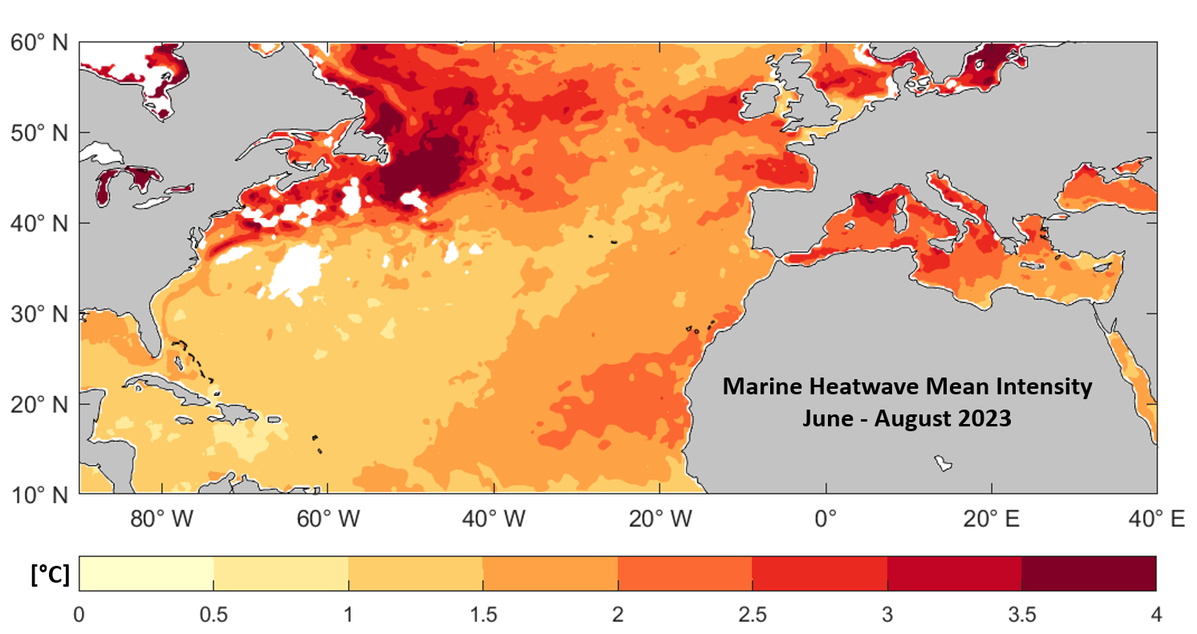06/08/2023 | WMO confirms July 2023 as the hottest month on record
|
Lorine Behr gave an interview to the Süddeutsche Zeitung about the current marine heatwave in the North Atlantic and the Mediterranean Sea. |
|
|---|---|
|
(C) Lorine Behr Article "Hitzewellen im Meer-Das hat für diesen Sommer niemand vorhergesagt", SZ vom 4.8.2023 (behind paywall) |
The article discusses the excessive ocean temperatures in the North Atlantic and Mediterranean Sea observed this year, especially in June and July. Globally, the surface temperature of the oceans in the mid-latitudes was 20.96 °C at the end of July, according to data from the EU's Copernicus climate service. This replaces the previous record of 20.95 °C set in 2016. It is interesting to note that these (marine) heatwaves are occurring everywhere at the same time this summer, or being one major heat wave e. g. in the North Atlantic. Reasons for that might be climate change, the current evolving El Niño in the South Pacific, the position of the jet stream or internal variability, like the Atlantic Multidecadal Oscillation, which is in its warmer phase in recent years. Also, the Western Mediterranean Sea was hit by a strong record-breaking marine heatwave in June, moving to the Eastern Mediterranean in July and August. In some areas like the Alboran Sea, this marine heatwave has been observed since March and was likely coupled to the strong heatwave in the eastern North Atlantic. However, the heat in the North Atlantic alone cannot explain this spread to the Eastern Mediterranean. Both, the ocean and the atmosphere, play a role in the most intense marine heatwaves. |
|
The Mediterranean region experienced repeated “Omega” or “Heat Dome” weather conditions in June and July, with hardly any rain or clouds, high solar radiation and warming of the air and sea surface temperature. (Marine) heatwaves have been occurring more frequently in the Mediterranean, are more intense and last longer than before. These are global phenomena, but the Mediterranean region is among the worst affected. This has an impact on the flora and fauna of the Mediterranean and other places: Many sponge and seagrass species cannot tolerate the high temperatures and die. Fish migrate to cooler environments, which in turn has an impact on the economy. Sombrero Reef in the Florida Keys observed 100% coral mortality at 38 °C water temperature. On the other hand, jellyfish and other invasive species thrive in these high temperatures and are likely to be found more frequently on European beaches. By then, at the latest, inhabitants and tourists will realize that something is seriously wrong in the ocean. read the WMO news item |
|

